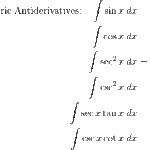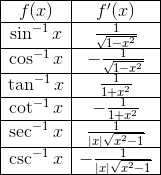
Studying for APUSH can be a difficult task. There is a lot of information to memorize and comprehend; historical facts, events, places, people, dates, names. It can all get a little overwhelming. Fortunately, studying for the APUSH exam doesn’t have to be as arduous or inconvenient as you might think. Use our AP US History study guide to help keep your study time productive!
AP US History study guide overall review
Scoring guidelines
It’s always a good idea to review exam expectations before studying. Understanding what kind of answers score best is a smart first step in formulating an effective study plan. For instance, on the APUSH exam multiple-choice represents the largest overall portion of your score. But 60% of your remaining score is comprised of some form of essay writing!
- Multiple choice, 55 questions = 40% of your total exam score
- Short answer, 3 questions = 20%
- Document based, 1 question = 25% of your total exam score
- Long essay, 1 question = 15%
In order to create a study plan that works best for you, take a look at your current skill set. Are you an accomplished essay writer? In previous APUSH class tests or practice tests, do you score well on multiple-choice questions? How well do you assess historical evidence? Most students require additional practice in writing timed essays, so make sure you adjust your study schedule to accommodate this type of practice into your study schedule.
Key concepts and events
As you review key APUSH concepts and events, keep a “whole picture” outlook in mind. The idea is not to memorize every little detail, but rather understand what lead to and consequences of major historical concepts.
AP US History exam questions require students to connect information across time periods, so it is important to be able to determine what a theme/event did or did not do. For example, the Emancipation Proclamation did help make European intervention in the war almost impossible. But it did not actually free slaves.
Although you may already have an ultimate list of AP US History key terms, themes and vocabulary, it never hurts to supplement with other options.
Rivermill Academy: list of over 444 terms and vocabulary, spanning all APUSH chapters
Adam Norris: all 27 key concepts in chronological order, periods 1-9
Quizlet: multiple quizzes focuses on APUSH key concepts and events
Key terms and vocabulary
Vocabulary is always an important feature on any exam, APUSH is no exception. Like key concepts and events, terms and vocabulary show up on every single AP US History exam. And for good reason. Understanding and utilizing vocabulary properly is an indicator of how well you know the material on the exam.
Some of our top choices for AP US History study support:
Quizlet Vocabulary: even more select quizzes targeting AP US History vocabulary
AP U.S. History Notes: complete vocabulary words organized by chapter
AP US History study guide: Multiple choice questions
On the AP US History exam, multiple choice questions are generally asked in sets of 2-5 questions. Some can rely on graphics, maps, charts or other alternative evidence to determine an answer. Because of the nature of multiple choice, you already know the correct answer is there somewhere – you just have to find it!
Strategies for answering multiple choice
Don’t be afraid to guess. APUSH does not penalize for incorrect answers. So a good test-taking strategy is to answer every single questions – even if it is just a guess.
Eliminate options you know are incorrect. There are often 1-2 choices that are very obviously wrong. Get rid of those possibilities right away so you can focus on more quality options.
Look at other questions for possible answers. Although it doesn’t happen often, sometimes tests provide answers to other questions while asking about something else. Use context clues to help further narrow down possible choices.
When down to two possible answers, always choose the one that is “most true”.
AP US History study guide: AP US History essays
Short answer
Each AP US History short answer question begins with a prompt that involves a historical source of some kind; an image, quote, maps, graphs or document. Analyze the historical sources, then use that information to compose a response. Many APUSH short answer questions focus on opposing viewpoints, so expect to provide support for both sides.
Short answer questions ask you to answer 3 separate parts (A, B, C) involving the prompt. Each part is graded separately, so if you miss a point on part A, you still can get full points for the remaining parts of the question. You will write three mini-essays total: the first two questions both focus on periods 3-8, then choose between Question 3 (periods 1-5) and Question 4 (periods 6-9).
Data-based question
AP US History data-based questions begin with a set of 5-7 historical documents. After reading through each of the documents, construct an essay that includes both information found in the historical documents, as well as your own prior APUSH knowledge regarding any content relevant to the topic.
AP College Board recommends taking the first 10-15 minutes to plan and outline your essay, then use the remaining time to write your well-constructed essay. Unlike the short answer, DBQ needs a thesis, main ideas that support your thesis and specific reference to the provided historical documents. Don’t forget to always include outside information; essays are a way to demonstrate the depth of your APUSH content knowledge and understanding.
Long essay
During your exam, you are given a set of instructions to help guide you through writing your AP US History long essay. Points are given for the quality of your thesis, application of historical thinking skills, support of your argument with evidence and synthesizing with additional content.
Like the DBQ, you only have one chance to make a great impression. Make sure you answer each section of the prompt completely and effectively. Remember that the long essay comes last after a series of 4 other essays – prepare your writing hand by practicing your writing in advance!
Additional tips and strategies for writing APUSH essays:
- Answer the prompt completely. We cannot stress this enough! No matter which essay you are writing, in order to receive full points your response needs to completely answer the prompt!
- Brainstorm and outline for 10-15 minutes. Take the time at the beginning to organize your thinking. It will pay off when you write your essay in a concise and well-structured manner. Remember to focus your responses to specifically address the prompt.
- Write clearly and succinctly. Make sure APUSH readers can follow your argument, explanations and evidence. Write your essay with flow and consistency so that your ideas don’t get lost in poor writing.
- Review and revise. Take the time to re-read your AP US History essays. Make sure your response explicitly responds to each part of the prompt and correct any errors that may prevent readers from fully understanding your intent.
For more information on everything APUSH, visit our blogs at Magoosh.com!




